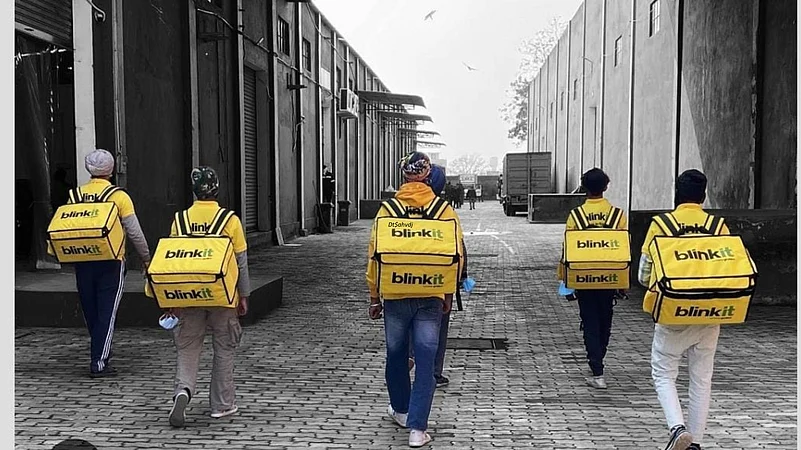Quick commerce is known for its constant experimentation—something that makes them both desirable by consumers and helps them keep a pace of the constantly changing world. Now, these platforms are trying to tap into the consumer base in Tier 2 cities.
After making a strong presence in the metro cities, the focus now is to expand beyond. Zomato-led Blinkit yesterday (September 3) became live in Kochi. Taking to LinkedIn, Albinder Dhindsa mentioned, “Our first store is located in Kaloor and will be serving Kaloor Stadium, Palarivattom, Jawahar Nagar and other nearby areas.”
The launch was made just before Onam. The company has onboarded local players such as Milma Milk, Ajmi Puttu Podi and Eastern Masalas on its platform. To add to it, the company also expanded its presence in Bathinda this week itself. Dhindsa mentioned on LinkedIn, “Our first store in Bathinda serves areas like Chandsar Basti, Model Town, Guru Gobind Singh Nagar and more.”
Advertisement
The company has been focusing on its expansion just ahead of the festive season, when demands are usually high on quick commerce platforms. The other cities where Blinkit expanded in the last one week include Vijayawada and Haridwar. All these places will see the launch of more stores in the coming days, as per Dhindsa.
Established in 2013, today Blinkit has its presence in more than 25 cities in India. Along with Blinkit, other quick commerce platforms such as Instamart and Zepto are also focusing on expanding in new areas. Additionally, Zepto too is trying to focus on expanding to Tier 2 cities such as Jaipur, Ahmedabad and Chandigarh. Instamart was the first quick commerce platform to expand to Tier 2 cities.
Advertisement
Flipkart, which just came up with its quick commerce platform ‘Flipkart Minutes,’ is also focusing on expanding in non-metropolitan cities, including Ludhiana, Nagpur, Patna, Raipur, Siliguri and Vijayawada.
Tier 2 Cities: The perfect location for companies?
The increasing interest in Tier 2 and Tier 3 cities is happening due to factors such as increasing disposable income, demand by consumers, and the penetration of the internet.
A report by EY titled Exploring the Shift: GCCs Moving to Tier-2 Cities for Cost and Talent Advantages says that factors such as affordable talent, infrastructure and social security are attracting companies towards Tier 2 cities. This in turn makes organisations across various sectors, including IT, professional services, financial services, manufacturing and technology, be encouraged to establish their GCCs, supported by state government policies and schemes, adds the report.
Further, approximately three hours are spent by 50 per cent of consumers in Tier 2 cities to do online shopping, as per a report released by think tank Pahle India Foundation named Net Impact of E-Commerce on Employment and Consumer Welfare in India. The number is 30 per cent in Tier 1cities. To add to it, a report by market research and advisory firm CyberMedia Research (CMR) released in July 2024 mentions that in Tier 2 cities, consumers spent 16 per cent of their income online; while it is just 8 percent in Tier 1 cities.
Lower rent is also something that again attracts companies. No doubt, Tier 2 cities outperform Tier 1 cities with regards to housing sales. A report by PropEquity says that across thirty Tier 2 cities, the sales of residential properties rose 11 per cent. Sales of housing rose by 11 per cent to 2,07,896 units in 2023–24 from 1,86,951 units in the previous fiscal year.
Advertisement
Challenges Ahead
While low operational costs and increasing demand are surely lucrative options for companies to settle down in Tier 2 cities, it comes with its own set of challenges. Supply chain challenges, trust of consumers towards local businesses (kirana stores) and lower penetration of internet are some of the reasons behind the same.
As per Redseer Strategy Consultants, almost 80 per cent of digital non-natives are satisfied with their local grocery shopping options. The report adds, “Moreover, these offline buyers prefer the touch and feel of the products being purchased to feel assured about the quality—an experience that’s not available when shopping online.” Thus, kiranas becomes the go to place for consumers.
Advertisement
Additionally, despite a large online user base in these cities, e-grocery penetration remains low, with only around 11 per cent, or 25 million people, being annual transacting users of e-grocery as of FY23.
In its Q3F24 shareholder letter, Zomato mentioned that 90 per cent of the GOV of Blinkit comes from the top eight cities. While the expansion into Tier 2 cities is like a wait-and-watch game, its possible challenges, as per JM Financial, include “low population density, smaller ticket sizes, and low ordering frequencies per customer".
Advertisement
The report further adds that these quick commerce platforms will face a higher cost of acquisition as they enter Tier 2 cities. This is due to the possibility that these platforms will devote resources to attract as well as retain customers. According to the study, they might also focus on covering the last-mile delivery and packing expenses, which would raise their acquisition costs.
As mentioned before, Instamart was the first platform to expand to Tier 2 cities. One difference it has compared to other platforms is the fact that it operates as an integrated brand within Swiggy. “This helps Instamart ensure lower cost of acquisition compared to the competition. Today, the offering has its own loyal base of consumers, which, in turn, benefits Swiggy’s other offerings,” the report adds. Blinkit for one, has to focus on various factors such as facing kirana stores, focussing on its supply chain management and more.
Advertisement
It will be interesting to observe how these platforms navigate the challenges and mark a presence in these cities.
















 Just one email a week
Just one email a week